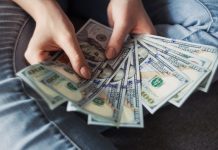The 2008 financial crisis might have been avoided if the Federal Reserve and the Bush administration had done their job. However, they chose to overlook the early indicators of trouble.
In April 2006, the first harbinger of danger appeared. The overall value of single-family house development permits fell by 9 percent from the previous year.
As a result, new house sales were expected to decline over the next nine months.
Nobody could have predicted that property prices would continue to decline. After a long time, it had not occurred since the depression. There was a 2% decline in the value of permits for single-family homes in May. It had fallen 26% at the end of the year.
For its part, the Fed remained upbeat. As the Federal Reserve noted in its November Beige Book report, the economy seemed to be robust enough to lift the housing market out of its rut. 2 Low inflation and rising consumer expenditure were predicted by the report. Second, in July of that year, the Fed chose to overlook the obvious signs of economic turmoil. That was the inversion of the Treasury yield curve. There was a 5.12% yield on the two-year note, which was higher than the 5.7% on the ten-year note (see chart).
When short-term Treasury note yields are greater than long-term yields, an inverted yield curve occurs
Short-term rates are lower than long-term yields in a healthy yield curve. Because they are investing for a longer period of time, investors want a larger rate of return. They prefer the security of a long-term bond in the event of a slump. Prior to the Great Recessions of 2001, 1991, and 1981, yield curves had also reversed.
Because interest rates were lower than in previous recessions, economists overlooked this indication.
The majority of them expected home values to grow if the Federal Reserve continued to reduce interest rates. The economy was well-capitalized, allowing for rapid expansion.
Fed officials expected the economy would continue to grow even in August 2007 despite the housing market’s downturn.
According to official figures, GDP growth in 2007 was only 1.9 percent
Deregulation, derivatives, and the subprime mortgage sector were not fully understood by economic observers until it was too late to prevent the financial crisis.
Deregulation
The Glass-Steagall Act of 1933 was abolished in 1999 by the Gramm-Leach-Bliley Act, often known as the Financial Services Modernization Act.
The repeal permitted banks to engage in derivatives with their customers’ money. Other derivatives were exempted from requirements in the Commodity Futures Modernization Act of the following year.
Derivatives
Banks were able to participate in derivatives when Congress removed restrictions on the use of deposit funds. They offered mortgage-backed securities, which are derivatives made from bundled mortgages. 9
A team of highly trained “quant jocks” was assembled by the banks to design and develop the new products. It was the “quants” that created the computer systems that broke down the MBS into several risk categories. Bundles with greater default risks have higher interest rates. Even though they paid less, low-risk packages were a better bet.
No one could decipher the packages since the software was so convoluted. Exactly how many of each bundle included subprime mortgage-backed securities was a mystery.
Nothing mattered as long as things were going well. There was a lot of money to be made by investing in the high-risk packages. Each and every one of these items lost value when the housing market deteriorated. This made it difficult to determine the value of these derivatives since no one had any idea what they were.
- Weakness in the secondary market meant that banks were not as concerned about the creditworthiness of their customers.
- Mortgage brokers who were not regulated gave out loans to persons who were not eligible.
- As a result of the success of the derivatives, banks were forced to increase their lending capacity. Borrowers were lured in by the allure of interest-only loans, which were promoted by banks.
The cheaper monthly payments attracted many first-time homebuyers to these loans. As mortgage rates rose, some homeowners were unable to make their payments. They couldn’t sell their properties for a profit when property values collapsed. The consequence was bankruptcy.
Subprimes and Economic Instability
Other banks were merely one of the many buyers of these MBS. All of the participants were private investors (individuals, pension plans, and hedge funds). In this way, the risk was dispersed throughout the economy.
These derivatives were used as collateral by hedge firms when they took out loans. While this led to bigger profits during a bull market, the effect of a bear market was amplified as a result. A lack of regulation by the Securities and Exchange Commission (SEC) meant no one knew how many hedge funds were operating.
Intervention by the Federal Reserve
As the summer progressed, banks grew more reluctant to lend to one other.
There was a fear that they would be repaid with terrible MBS
Many bankers were unaware of the amount of bad debt they had on their balance sheets. Nobody wanted to confess it. Credit ratings would be downgraded if they did so.
Then, their stock price would drop, and they would be unable to obtain further capital to continue operating. Stock prices fluctuated over the summer as investors sought to determine how terrible things were.
Last Words
The catastrophe might have been avoided if one of two things had happened. Regulation of mortgage brokers and hedge firms, which produced poor loans, would have been the first step. The second would have been able to see the issue sooner. To save the economy, it was necessary for the government to purchase problematic debts.








































